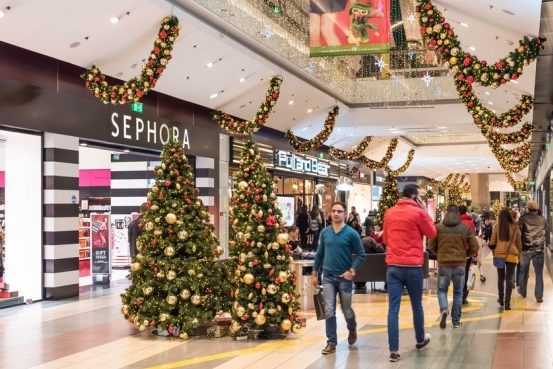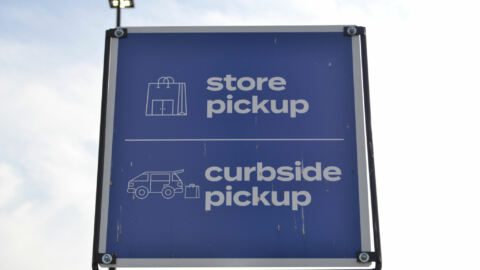The overall economy continues to grow, but for a number of leading retailers, lower gas prices and rising employment didn’t translate into a happy holiday season. In fact, the new year brought announcements of layoffs and store closings at Macy’s, rumors that Kohl’s would be going private, and announcements that Walmart would be closing an unprecedented 269 stores worldwide in 2016.
Retail TouchPoints asked industry experts to weigh in who were the real winners and losers of holiday 2015, as well as how widespread the “fallout” from this lackluster season is likely to be.
Here are some of the highlights:
-
Hyper-promotionalism was a self-induced problem;
-
Customer Service failed to help frustrated shoppers;
-
Personalization will help General Merchandise stores survive;
-
The “Amazon Effect” means each consumer’s best experience translates into their minimal expectation everywhere; and
-
Store closings will accelerate after the difficult holiday season.
Paula Rosenblum, Managing Partner, Retail Systems Research:
Department stores were generally a disaster, and apparel overall didn’t perform. I’m not sure about executive changes; after all, good retail execs are hard to find. But contractions are appropriate, since the country is over-stored still.
There were not many bright spots. I think the poor season was a self-induced problem, caused by endless hyper-promotionalism. After all, on some level, “Prime Day” was “Black Friday in July.” JULY? What a waste! I suppose the brightest spot was the 47 retailers who opted not to open on Thanksgiving day. I expect that number to rise a LOT next year. Dumb, expensive idea.
Kim Garretson, Business Development Advisor, TrackIf:
The segments that failed to perform well were the mass retailers in their hottest categories (not door busters) and the apparel retailers who still have not switched to a fast fashion supply chain. My reasons revolve around out-of-stocks, and the failed promise of customer centricity by these retailers. The major stumble I saw was the failure of customer service departments to help shoppers who were frustrated by the out-of-stocks. I monitored the customer service Twitter accounts of most of the top 10 retailers in December, and the most frequent questions were about availability. The most common answer was: “Sorry, we don’t know. Why don’t you keep checking back.”
To me, this is not customer centric, and in fact, I suspect most retailers lost the sale of the hot items or apparel that was out of stock in certain sizes and colors. In fact, in research done by the e-Tailing Group in 2015, when consumers were asked what they did when encountering out-of-stocks, 50% said they went to Google to search another source, and 46% said they went straight to a competitive retailer’s site.
I saw a couple of bright spots by retailers this holiday. For instance, a top 10 retailer embedded a form at out-of-stock product pages asking for an email address for triggered alerts when products came back in stock. Up to 40% of shoppers took advantage of this option. Another retailer embedded Facebook comments at the product page level and when a shopper asked a question about when a product would be going on sale, customer service at the retailer answered by showing the shopper where to leave an email address to get alerted to the price drops.
Ken Morris, Principal, Boston Retail Partners:
According to NRF’s retail sales report, the general merchandise segment had the most disappointing sales during the 2015 holiday season. The ongoing challenge for general merchandise retailers is that most of the products they sell are commodities and can be purchased elsewhere — consumers can compare prices and find the best deal online. The best way general merchandise retailers will survive is to establish a relationship with customers for a truly personal and enhanced shopping experience.
The biggest bright spot for the 2015 holiday season was definitely online and mobile commerce, which out-performed in-store sales. However, 90% of all sales still come from stores. With the holiday campaigns starting earlier, the day after Halloween, and the same door-buster deals available online, many consumers chose to shop online rather than fight the crowds. Retailers need to cater to ‘my daughter not my mother’ — the Millennial segment that is always connected and prefers the digital shopping experience, especially for commodity products.
Greg Girard, Program Director, Merchandising and Marketing Strategies and Retail Analytics, IDC Retail Insights
The effects of digital transformation are a driving force behind many of the poor results we’ve seen. Millions of consumers in the U.S. and billions more worldwide are changing how they shop with their own “SMAC stacks” of social, mobile, analytics, and cloud technologies. They upgrade and change their behaviors at breakneck speed compared to what most retailers can achieve.
The retailer-consumer digital divide is playing out on a number of fronts and it’s playing out in a world where each consumer’s best experience anywhere sets their minimal expectation everywhere. What you might call “have it your way” fulfillment is a good example. The consumer thinks “if Amazon can give me so many fulfillment options, including now same day in some markets for some categories, why can’t other retailers?”
Retailers who can’t optimize their omnichannel experience will close 10 times more stores than those who can over the next three to five years. Born digital omnichannel and e-Commerce retailers are way ahead in deploying mobile-first, cloud-provisioned systems that support real-time analytics, decision making, and process control.
Shelley E. Kohan, VP of Retail Consulting, RetailNext:
I think many apparel and seasonal goods brands and retailers struggled based on weather conditions. Price promotions had a negative impact on margins, and to make matters even worse, there are overstocked inventories to deal with at the end of the season. Department store formats were challenged more than specialty stores, as well as general merchandise stores that rely heavily on apparel and accessories sales.
Whenever results are sub-standard, the industry reacts with a variety of measures, including closing unproductive stores and looking at ways to reduce expenses, particularly with inventories and labor. I believe we will begin to see all retail organizations showing less hierarchy and becoming flatter, but any businesses that had difficult performance in what is expected to be the most profitable time of the year might accelerate these changes. Executive changes are a normal course of action in the industry and are accelerated in down trending businesses.













3 Ways Livestreaming is Shaking Up the Retail Marketing Playbook